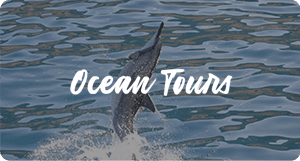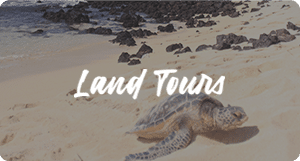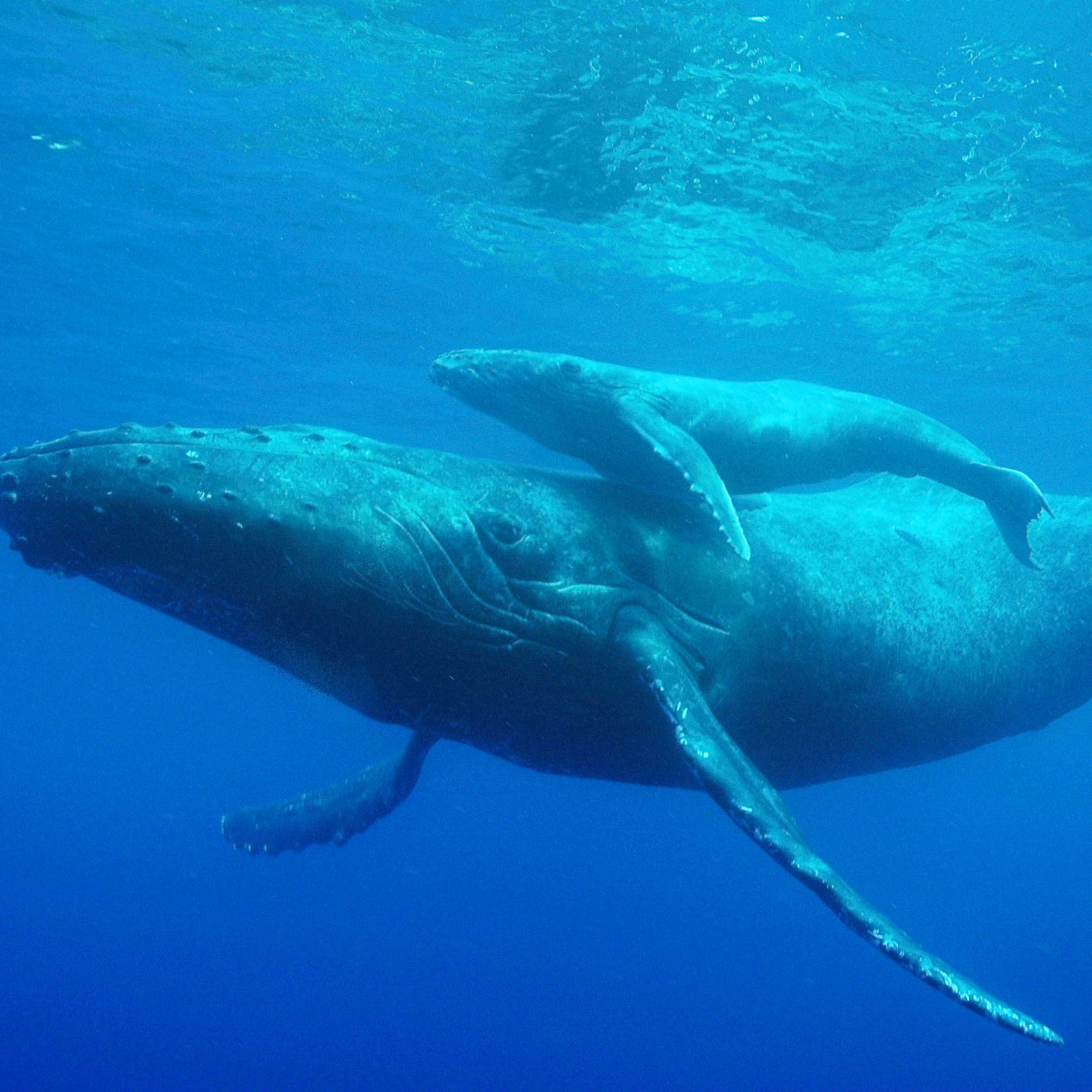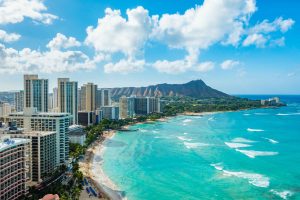Every winter, thousands of humpback whales travel more than 3,000 miles from the icy waters of Alaska to the warm, protected channels of Hawaiʻi. For visitors, this means one of the most incredible natural experiences on earth: seeing a 40-ton whale breach the surface against the backdrop of Diamond Head or the Koʻolau mountains.
If you’re planning a 2025 trip to Oʻahu and wondering when you’ll have the best chance to see whales, this guide covers everything you need to know — peak months, ocean conditions, where to go, and which tours offer the most reliable sightings.
And this season, there’s even better news:
Whales & You and Dolphins & You are both 30% OFF during Black Friday week with code BFCM30.
When Is Whale Season in Oʻahu?
Official Whale-Watching Season: December to March
Humpback whales (koholā in Hawaiian) arrive in the islands beginning in December and remain through March. This four-month window is considered the official whale-watching season in Hawaiʻi.
Peak Months: January & February
If you want the strongest chance of seeing multiple whales in one outing — breaching adults, mothers with calves, tail slaps, pectoral waves — plan your tour during mid-January to late February.
This is when humpback activity is at its absolute highest around Oʻahu.
Early Arrivals (Early November – Early December)
Some whales arrive ahead of schedule — and this year, our crew on Dolphins & You already spotted early-season humpbacks off the West Oʻahu coast.
Early sightings tend to happen on the leeward (west) side because of deeper channels and migratory pathways.
Late Season: March
March remains an excellent month for whale watching. You may see:
- Mother whales teaching calves to breach
- Playful pectoral slaps from young whales
- Pairs drifting slowly along the shoreline
Where Are the Best Places to See Whales in Oʻahu?
1. Waikīkī & South Shore
The waters off Waikīkī and Kewalo Basin are calm, deep, and reliably active during winter.
This is where Whales & You operates daily whale-watching tours from December through March.
Benefits of this region:
- Calm morning conditions
- Excellent visibility
- Close proximity to hotels
- Large whale populations offshore
2. West Oʻahu
The west coast features deep channels and warm waters—ideal for whale migration.
Our Dolphins & You tours often encounter whales before the official season begins.
Whales are not the primary focus of this tour, but recent sightings confirm the migration has already begun.
3. Viewing From Shore
If you prefer staying on land, some areas occasionally offer shoreline whale sightings:
- Makapuʻu Lighthouse Trail
- Diamond Head Lookout
- Ko Olina lagoons
- Kakaʻako shoreline
These views are beautiful but not nearly as reliable as joining a licensed boat tour.
What Time of Day Is Best for Whale Watching?
Morning Tours = Best Ocean Conditions
- Lighter winds
- Calmer water
- Clearer visibility
This is why most dedicated whale-watching tours operate in the morning.
Afternoons can be windier, leading to choppier conditions and reduced visibility.
Midday Still Works
Whales are active all day, so midday can also be rewarding — especially during peak season.
The Best Way to See Whales
Whales & You (December–March) – Oʻahu Whale-Watching Tour
Your highest chance of seeing humpback whales up close is aboard Whales & You.
Here’s what sets the experience apart:
✔ Expert Whale Guides
Our crew is trained to spot whale spouts, breaches, and tail slaps from long distances, helping you catch every moment.
✔ Cultural & Educational Insights
You’ll learn about:
- Koholā’s significance in Hawaiian culture
- How whales communicate
- Their migration behaviors
- Conservation efforts that protect humpbacks today
✔ Open Viewing Decks
Large, stable decks make it easy to photograph whales from multiple angles.
✔ Family-Friendly + Eco-Certified
The tour follows all NOAA wildlife guidelines and practices responsible marine viewing at a respectful distance.
Can You See Whales on Dolphins & You?
Yes — and We Already Have.
While Dolphins & You is primarily a year-round dolphin and snorkel tour, we often see whales early in the season, especially in November and early December.
Why?
The west side offers:
- Deep waters close to shore
- Calm morning conditions
- Seasonal migration paths
If you’re visiting before whale season officially begins (before December), Dolphins & You gives you a real chance to witness early arrivals — just like our guests did last week.
Note: Dolphin and whale sightings are never guaranteed on any tour. All marine animals are wild and free to roam.
Why Do Whales Come to Hawaiʻi?
Hawaiʻi is one of the world’s most important humpback whale habitats because it offers:
- Warm, shallow waters
- Protection from predators
- Ideal conditions for calving and nursing
- Minimal human-made noise (compared to Alaska)
It’s the perfect environment for newborn whale calves to learn how to swim, socialize, and communicate.
Black Friday Sale — 30% OFF
For a limited time only, you can book both Whales & You and Dolphins & You at a huge 30% OFF with promo code:
🎉 BFCM30
This is the best deal we offer all year — perfect for:
- Winter visitors
- Holiday travelers
- Early 2025 planners
- Families visiting during Christmas break
Book now before popular dates fill up.
Ready to See Whales in 2025? Here’s Your Plan.
If you’re visiting Oʻahu between December and March, the answer is simple:
👉 Join Whales & You for the highest chance of unforgettable whale encounters.
👉 If you’re visiting in November or early December, Dolphins & You may treat you to early-season whales — as it already has this year.
And don’t forget — you can save big with our Black Friday code:
🎟 Use Code: BFCM30 for 30% Off Whale & Dolphin Tours
All wildlife interactions happen naturally in the wild. Sightings cannot be guaranteed. Tours follow all NOAA guidelines to protect Hawaiʻi’s marine life.














